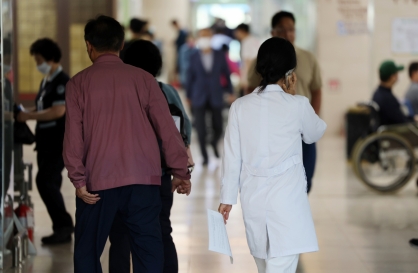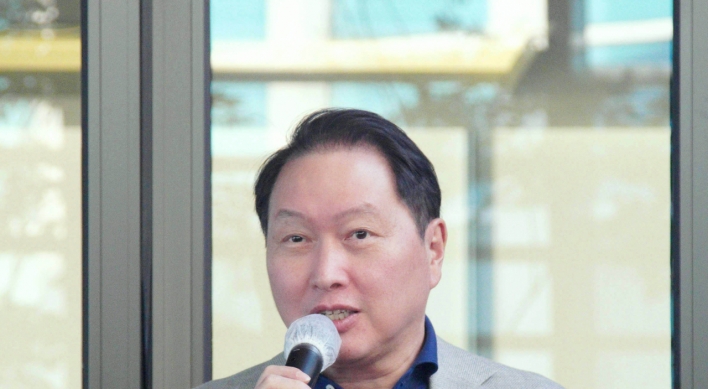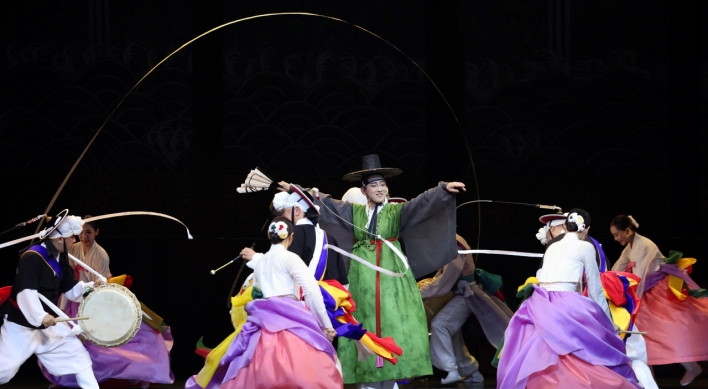[Kim Myong-sik] Thinning trust in our intelligence apparatus
By Yu Kun-haPublished : Oct. 16, 2013 - 19:23
Let us review the fuss here over the recent disappearance and reappearance of North Korea’s de facto first lady Ri Sol-ju.
 One recent defector from a high position in Pyongyang seems to have been contacted by a reporter from the Japanese daily Asahi Shimbun sometime last month. Their conversation resulted in the newspaper’s report in its Sept. 20 edition on the “public execution” of nine musicians in Pyongyang. They met the tragedy because they claimed Ri Sol-ju “played” with them when they were engaged in making pornography, according to the Japanese paper. The article was picked up by Yonhap News and was published by almost all print and broadcast media here.
One recent defector from a high position in Pyongyang seems to have been contacted by a reporter from the Japanese daily Asahi Shimbun sometime last month. Their conversation resulted in the newspaper’s report in its Sept. 20 edition on the “public execution” of nine musicians in Pyongyang. They met the tragedy because they claimed Ri Sol-ju “played” with them when they were engaged in making pornography, according to the Japanese paper. The article was picked up by Yonhap News and was published by almost all print and broadcast media here.
Over the past month, this story on the Eunhasu Orchestra and Wangjaesan Troupe was one of the hottest items in South Korea’s media market along with the developments in former prosecutor general Chae Dong-wook’s paternity issue. Attention grew as Ri Sol-ju stopped appearing in North Korea’s official media from about the time of the report.
Seoul’s highest intelligence official validated the speculation about Ri’s demise when he told lawmakers that he knew of the alleged execution, but the mystery ended in an anticlimax as Ri reappeared in public alongside Kim Jong-un last week. The Pyongyang radio and TV broadcast Eunhasu Orchestra’s performance during a party anniversary celebration with music composed by one of those allegedly executed.
So, we have watched yet another case of personality resurrection after reports here of purges and executions in North Korea. In the latest example, blame should first go to Asahi, which showed a lack of editorial prudence in publishing the grisly story, relying on an unnamed source described only as “from a high position.” But what is good about reporting on happenings in North Korea is that total impunity is guaranteed however fantastic or libelous the story may be.
It was rather strange that the bloody execution story was published by the liberal Asahi Shimbun instead of the ultra-conservative Sankei Shimbun in the Japanese media world. Asahi had in the 1970s often carried articles sympathetic with the Pyongyang leadership and the Park Chung-hee administration even expelled Asahi’s Seoul correspondent in retaliation for commentary that eulogized the socialist wonderland of the DPRK.
When the execution story appeared, Seoul newspapers had already begun counting the number of days since Ri was last seen in public. She was watching an international weight-lifting competition in Pyongyang on Sept. 15 accompanying Kim Jong-un. Yet, few paid attention to the reported date of the alleged execution ― Aug. 20 ― which was weeks before Ri’s appearance at the sports event. If she had been pointed to in the investigation of the pornography scandal, could she have been around in the sports arena on Sept. 15?
Ri Sol-ju’s fall to disgrace became a truthful fact for some radical groups of North Korean refugees, who used her yet unconfirmed fate in their anti-North campaign. They defied advice from more cautious refugees and flew 100 balloons containing 500,000 sheets of leaflets with messages denouncing the Kim family’s despotic rule from near the Demilitarized Zone. On the fliers were pictures purportedly showing Ri in an obscene act.
There were already skeptical opinions about the Asahi report among knowledgeable refugees and North Korea experts. Some pointed out that Wangjaesan Troupe was disbanded in 2009 and Eunhasu Orchestra only plays classical music, hence little chance of any former or present members’ engaging in a pornography trade, let alone Ri’s direct involvement. North Korea experts like professor Andrei Lankov in Seoul doubted the commercial viability of an adult video venture in North Korea, given its bleak social environment.
Then we came upon the news that director Nam Jae-joon of the National Intelligence Service briefed lawmakers at the Intelligence Committee on the report of the musicians’ execution. After a closed-door session on Oct. 8, plural members of the committee quoted the NIS chief as saying that he was “aware of the executions” reported by the Asahi Shimbun. Newspapers headlined that Nam confirmed the executions in Pyongyang.
Reading his remarks conveyed by the briefed lawmakers, I was not sure whether he was positively vouching the truthfulness of the Asahi report on the basis of the NIS’ own information or he was simply speaking of his knowledge about the rumors circulating in the North.
The NIS these days is making significant political exposures with its investigation of the allegedly militant pro-North Korean activities of the “Revolutionary Organization” unit of the United Progressive Party, its involvement in the controversy over the minutes of former President Roh Moo-hyun’s October 2007 talks with Kim Jong-il in Pyongyang, and the opposition claim of its interference in the last presidential election. On the other hand, not many are convinced that the state intelligence organization is doing its job well in the original task of keeping the nation informed of what is going on with its enemy.
The organization’s primary mission is to look closely into North Korea to obtain accurate information with which the government can effectively deal with Pyongyang’s threats and the people can maintain a stable life without unnecessary fear or complacency about the North. We tend to believe that the existence of tens of thousands of refugees who arrived here in recent years would make the job of our intelligence apparatus much easier than before, but it seems not to be the case.
NIS officials in the field are complaining of the depletion of their “humint,” or human intelligence resources, as a result of interference by politics through changes of government. Whatever their excuse, the confusion over the alleged execution of musicians in Pyongyang and the hide-and-seek with Ri Sol-ju over the past few weeks revealed that there is still much to be desired in the operational mechanism and capabilities of our state intelligence apparatus.
Ri became a curse to the NIS. When she first appeared near Kim Jong-il’s coffin two years ago, our intelligence officials unsuccessfully scrambled to identify the black-clad young lady, but it was several months later that the North’s media provided her identity. She again embarrassed the South’s intelligence agency by reappearing in public the day after its chief hinted his “awareness” of a pornography scandal in the North that could have possibly involved the de facto first lady.
It would have been a little better if director Nam had told lawmakers that his organization still had no information about the reported executions in Pyongyang.
By Kim Myong-sik
Kim Myong-sik is a former editorial writer of The Korea Herald. ― Ed.
 One recent defector from a high position in Pyongyang seems to have been contacted by a reporter from the Japanese daily Asahi Shimbun sometime last month. Their conversation resulted in the newspaper’s report in its Sept. 20 edition on the “public execution” of nine musicians in Pyongyang. They met the tragedy because they claimed Ri Sol-ju “played” with them when they were engaged in making pornography, according to the Japanese paper. The article was picked up by Yonhap News and was published by almost all print and broadcast media here.
One recent defector from a high position in Pyongyang seems to have been contacted by a reporter from the Japanese daily Asahi Shimbun sometime last month. Their conversation resulted in the newspaper’s report in its Sept. 20 edition on the “public execution” of nine musicians in Pyongyang. They met the tragedy because they claimed Ri Sol-ju “played” with them when they were engaged in making pornography, according to the Japanese paper. The article was picked up by Yonhap News and was published by almost all print and broadcast media here.Over the past month, this story on the Eunhasu Orchestra and Wangjaesan Troupe was one of the hottest items in South Korea’s media market along with the developments in former prosecutor general Chae Dong-wook’s paternity issue. Attention grew as Ri Sol-ju stopped appearing in North Korea’s official media from about the time of the report.
Seoul’s highest intelligence official validated the speculation about Ri’s demise when he told lawmakers that he knew of the alleged execution, but the mystery ended in an anticlimax as Ri reappeared in public alongside Kim Jong-un last week. The Pyongyang radio and TV broadcast Eunhasu Orchestra’s performance during a party anniversary celebration with music composed by one of those allegedly executed.
So, we have watched yet another case of personality resurrection after reports here of purges and executions in North Korea. In the latest example, blame should first go to Asahi, which showed a lack of editorial prudence in publishing the grisly story, relying on an unnamed source described only as “from a high position.” But what is good about reporting on happenings in North Korea is that total impunity is guaranteed however fantastic or libelous the story may be.
It was rather strange that the bloody execution story was published by the liberal Asahi Shimbun instead of the ultra-conservative Sankei Shimbun in the Japanese media world. Asahi had in the 1970s often carried articles sympathetic with the Pyongyang leadership and the Park Chung-hee administration even expelled Asahi’s Seoul correspondent in retaliation for commentary that eulogized the socialist wonderland of the DPRK.
When the execution story appeared, Seoul newspapers had already begun counting the number of days since Ri was last seen in public. She was watching an international weight-lifting competition in Pyongyang on Sept. 15 accompanying Kim Jong-un. Yet, few paid attention to the reported date of the alleged execution ― Aug. 20 ― which was weeks before Ri’s appearance at the sports event. If she had been pointed to in the investigation of the pornography scandal, could she have been around in the sports arena on Sept. 15?
Ri Sol-ju’s fall to disgrace became a truthful fact for some radical groups of North Korean refugees, who used her yet unconfirmed fate in their anti-North campaign. They defied advice from more cautious refugees and flew 100 balloons containing 500,000 sheets of leaflets with messages denouncing the Kim family’s despotic rule from near the Demilitarized Zone. On the fliers were pictures purportedly showing Ri in an obscene act.
There were already skeptical opinions about the Asahi report among knowledgeable refugees and North Korea experts. Some pointed out that Wangjaesan Troupe was disbanded in 2009 and Eunhasu Orchestra only plays classical music, hence little chance of any former or present members’ engaging in a pornography trade, let alone Ri’s direct involvement. North Korea experts like professor Andrei Lankov in Seoul doubted the commercial viability of an adult video venture in North Korea, given its bleak social environment.
Then we came upon the news that director Nam Jae-joon of the National Intelligence Service briefed lawmakers at the Intelligence Committee on the report of the musicians’ execution. After a closed-door session on Oct. 8, plural members of the committee quoted the NIS chief as saying that he was “aware of the executions” reported by the Asahi Shimbun. Newspapers headlined that Nam confirmed the executions in Pyongyang.
Reading his remarks conveyed by the briefed lawmakers, I was not sure whether he was positively vouching the truthfulness of the Asahi report on the basis of the NIS’ own information or he was simply speaking of his knowledge about the rumors circulating in the North.
The NIS these days is making significant political exposures with its investigation of the allegedly militant pro-North Korean activities of the “Revolutionary Organization” unit of the United Progressive Party, its involvement in the controversy over the minutes of former President Roh Moo-hyun’s October 2007 talks with Kim Jong-il in Pyongyang, and the opposition claim of its interference in the last presidential election. On the other hand, not many are convinced that the state intelligence organization is doing its job well in the original task of keeping the nation informed of what is going on with its enemy.
The organization’s primary mission is to look closely into North Korea to obtain accurate information with which the government can effectively deal with Pyongyang’s threats and the people can maintain a stable life without unnecessary fear or complacency about the North. We tend to believe that the existence of tens of thousands of refugees who arrived here in recent years would make the job of our intelligence apparatus much easier than before, but it seems not to be the case.
NIS officials in the field are complaining of the depletion of their “humint,” or human intelligence resources, as a result of interference by politics through changes of government. Whatever their excuse, the confusion over the alleged execution of musicians in Pyongyang and the hide-and-seek with Ri Sol-ju over the past few weeks revealed that there is still much to be desired in the operational mechanism and capabilities of our state intelligence apparatus.
Ri became a curse to the NIS. When she first appeared near Kim Jong-il’s coffin two years ago, our intelligence officials unsuccessfully scrambled to identify the black-clad young lady, but it was several months later that the North’s media provided her identity. She again embarrassed the South’s intelligence agency by reappearing in public the day after its chief hinted his “awareness” of a pornography scandal in the North that could have possibly involved the de facto first lady.
It would have been a little better if director Nam had told lawmakers that his organization still had no information about the reported executions in Pyongyang.
By Kim Myong-sik
Kim Myong-sik is a former editorial writer of The Korea Herald. ― Ed.




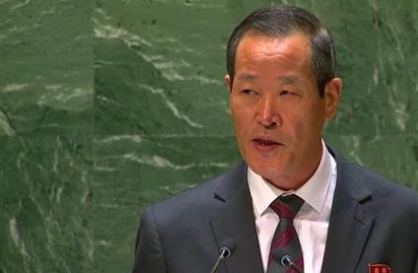
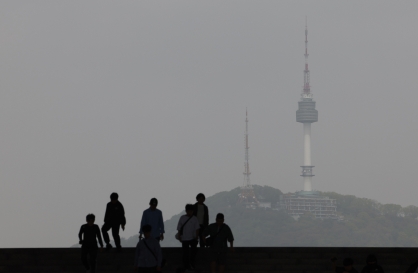
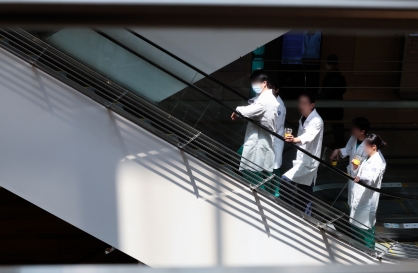
![[AtoZ Korean Mind] Does your job define who you are? Should it?](http://res.heraldm.com/phpwas/restmb_idxmake.php?idx=644&simg=/content/image/2024/05/06/20240506050099_0.jpg&u=)
